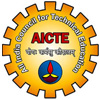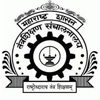
Dr. Medha Gijare
Lecturer in Physics (SL grade)
Academic and NBA coordinator,
AISSMS’s Polytechnic, Pune 1
Physics is everywhere around us. The word Physics originated from the Ancient Greek language meaning; knowledge of nature it is the natural science that studies matter, its motion, and behavior through space and time. Physics studies the related entities of energy and force. Physics is one of the most fundamental scientific disciplines, and its main objective is to understand how the universe behaves. Physics generates vital knowledge needed for future technological advances.
Significance of Physics in our daily life
All the activities in our daily life include the application of physics. For example, ironing clothes, cooking, washing, replying to a telephone call, and listening to the radio, are some of the activities where we practice the principles of physics. When you look at the light bulb above you, you remember Thomas Alva Edison. When the telephone bell rings, you remember Alexander Graham Bell. Marie Curie was the first woman to win the Nobel Prize. When you see the blue sky, you think of Sir C.V. Raman. Physics is involved in running automobiles and trains, moving objects, flying airplanes, and kites, orbiting satellites, zooming jet planes, etc. Physics has applications in the construction of bridges, buildings, roads, houses, ships, and boats. Knowledge of physics will help the common people to escalate, realize and relate better to the environment. The laws of physics explicate the principle behind the existence of thunder and lightning or a rainbow in the sky. Several modern services like washing machines, refrigerators, and floor polishers make use of the principles of physics. Physics is also applied in the systems of communication, modern means of transportation, and advancement in medicine, industry, and agriculture. So, it is a fact that all the comforts which make the life of common people more enjoyable and easy are based on solid principles of physics and their commercial applications.
Physics in Engineering and Technology
There exist two groups of physicists: pure physicists and applied physicists. Pure physicists acquire
scientific knowledge used in very practical applications. Meanwhile, applied physicists, as the name
suggests, explore problems in technology and industry. If you’re picturing a physicist, Isaac Newton,
Albert Einstein, Marie Curie, or Stephen Hawking might come to mind. Engineering is an almost entirely applied science. However, the difference between applied physics and engineering is that engineers are much more concerned with how a scientific theory, device, or technology can be used. They are less concerned than physicists with the theoretical basis underlying the technique used to solve the problem. Famous engineers include Alexander Graham Bell, Nikola Tesla, and Steve Wozniak. The physicist studies the way the world works, and the engineer takes that information and uses it to design, build and produce. Physicists specialize in areas as diverse as astronomy, astrophysics, nuclear physics, molecular physics, biomechanics, neuroscience, financial markets, aircraft design, robotics, quantum computing, and other fields too numerous to name. Physicists follow the basic principles surrounding energy and matter and their interactions. Whereas engineers simply put, that they want to know the “why,” and they often want to apply this knowledge to build new devices and create new technologies. There is no better example of this way of thinking than the invention of the transistor at Bell Labs, a discovery that won the Nobel Prize in Physics in 1956. In a way, the team’s discovery set the entire digital revolution in motion. Without transistors, smartphones and computers wouldn’t exist! Ultimately, engineers aim to create things—bridges, computer hardware, chemical solutions—and they use the laws of the universe as a guide. Furthermore, the study of physics develops the ability for problem-solving, logical thinking, and also the ability to think intellectually. Physical concepts, such as classical mechanics, thermodynamics and statistical mechanics, electromagnetism, quantum mechanics, atomic physics, molecular physics, optics, condensed matter physics, nuclear physics, etc., play a vital role in the process of innovation, which is, decisive in the development of engineering branches.
Engineering is basically physics applied to create something more practical. It can be mechanical, electrical, civil, computer, electronics, space, etc., but they’re all basically governed by physics. There’s no way you would solve complex engineering problems without understanding the physics behind them. In Civil Engineering, the laws of physics can tell you about forces, tension, harmonic vibrations and oscillations, tensile strength, elasticity, and all kinds of other concepts that you can use to make calculations about your designing and construction work .
For every subject of Mechanical Engineering, you need the help of physics in dealing with aircraft, watercraft, engines, robotics, weapons, cars, pneumatics, hydraulics, and others by using core areas
including mechanics, dynamics, thermodynamics, materials science, structural analysis, and electricity. Electrical engineering involves designing electrical circuits including motors, electronic appliances, optical fiber networks, computers, and communication links. Electrical engineers often need to convert electrical energy to other forms of energy, with the understanding of mechanics and thermodynamics. Knowing the fundamentals of Electrical Engineering, in addition to, how small-scale components like integrated circuits and various types of transistor logic, all functions require at least an intermediate understanding of Electromagnetism, which you learn from Physics. Electronics include the workings of transistors, diodes, and semiconductors. The integrated circuit uses physics to study how various tiny transistors are connected in circuits. Electromagnetism is used for antennae design, RF signals, wireless communications, etc. The field of robotics relies on a lot of things physics such as dynamics, mechanics, motors, etc. as well as optics (in cameras for computer vision). Since Electrical engineering leads to Electronics engineering and finally to Computer engineering Information Technology and Artificial Intelligence, it can be concluded that the mother of all engineering branches is Physics.
An engineer might design the product itself, or just figure out a way to build it. But either way, success is impossible without an understanding of the physics behind each of them. Thus, it is factual that Physics has a substantial role in Engineering. I conclude with a famous quote from Missile Man of India, Dr. A. P. J. Abdul Kalam sir, “Teaching is a very noble profession that shapes the character, caliber, and future of an individual. If the people remember me as a good teacher that will be the biggest honor for me.”



